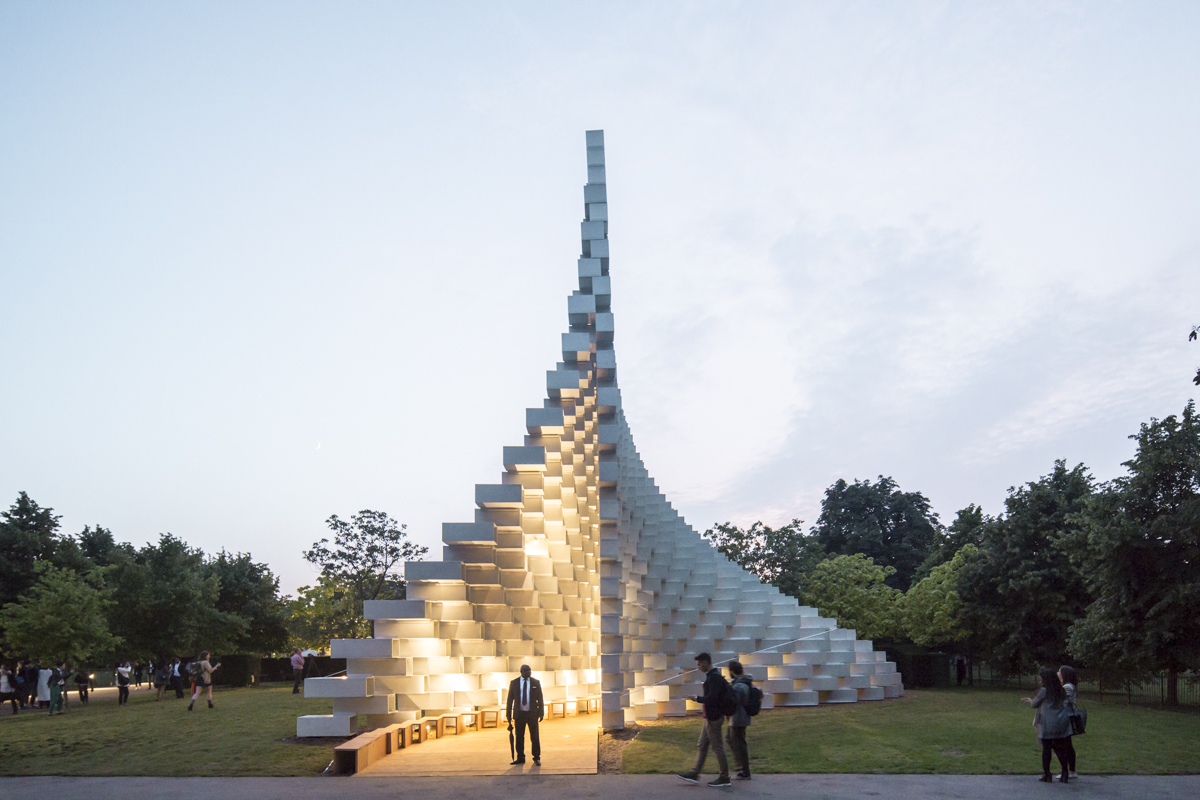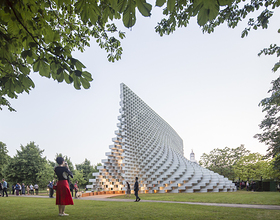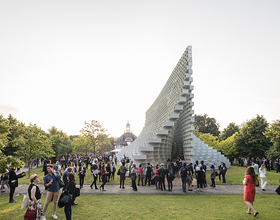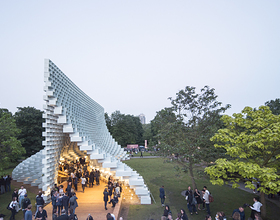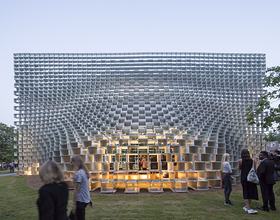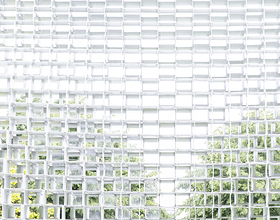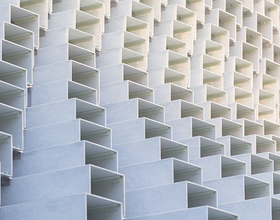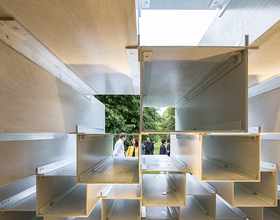SERPENTINE PAVILION
-
In tandem with the 16th Pavilion in 2016, the Serpentine Galleries expanded its internationally acclaimed programme of exhibiting architecture in a built form by commissioning four architects to each design a 25sqm Summer House.
The four Summer Houses were inspired by the nearby Queen Caroline’s Temple, a classical style summer house, built in 1734 and a stone’s throw from the Serpentine Gallery. In line with the criteria for the selection of the Pavilion architect, each architect chosen by the Serpentine had yet to build a permanent building in England.
The Serpentine Pavilion, designed by Bjarke Ingels Group (BIG), was an ‘unzipped wall’ that was transformed from straight line to three-dimensional space, creating a dramatic structure that by day housed a café and free family activities and by night became a space for the Serpentine’s acclaimed Park Nights programme of performative works by artists, writers and musicians.
For the Serpentine Pavilion 2016, BIG have attempted to design a structure that embodies multiple aspects that are often perceived as opposites: a structure that is free-form yet rigorous; modular yet sculptural; both transparent and opaque; both solid box and blob.
The practice decided to work with one of the most basic elements of architecture: the brick wall.
Rather than clay bricks or stone blocks, however, the wall is erected from pultruded fibreglass frames stacked on top of each other. The wall is then pulled apart to form a cavity within it, to house the events of the Pavilion’s programme. This unzipping of the wall turns the line into a surface, transforming the wall into a space. A complex three-dimensional environment is created that can be explored and experienced in a variety of ways, inside and outside. At the top, the wall appears like a straight line, while the bottom of it forms a sheltered valley at the entrance of the Pavilion and undulating hillside towards the Park.
The unzipped wall creates a cave-like canyon lit through the fibreglass frames and the gaps between the shifted boxes, as well as through the translucent resin of the fiberglass. As a result, the shifting overlaps as well as the movement and presence of people outside create a lively play of light and shadow on the cave walls within.
The materials include wooden floors and extruded Fiberline profiles, providing every surface with a warm glow and linear texture – from the mesh of woven glass fibres to the undulating lines of the grain of wood.
This simple manipulation of the archetypal space-defining garden wall creates a presence in the Park that changes as you move around it and as you move through it.
The North-South elevation of the Pavilion is a perfect rectangle. The East-West elevation is an undulating sculptural silhouette. Towards the East-West, the Pavilion is completely opaque and material. Towards the North-South, it is entirely transparent and practically immaterial. As a result, presence becomes absence, orthogonal becomes curvilinear, structure becomes gesture, and box becomes blob.
Photo credits: Laurian Ghinitoiu.
1870 Projects

